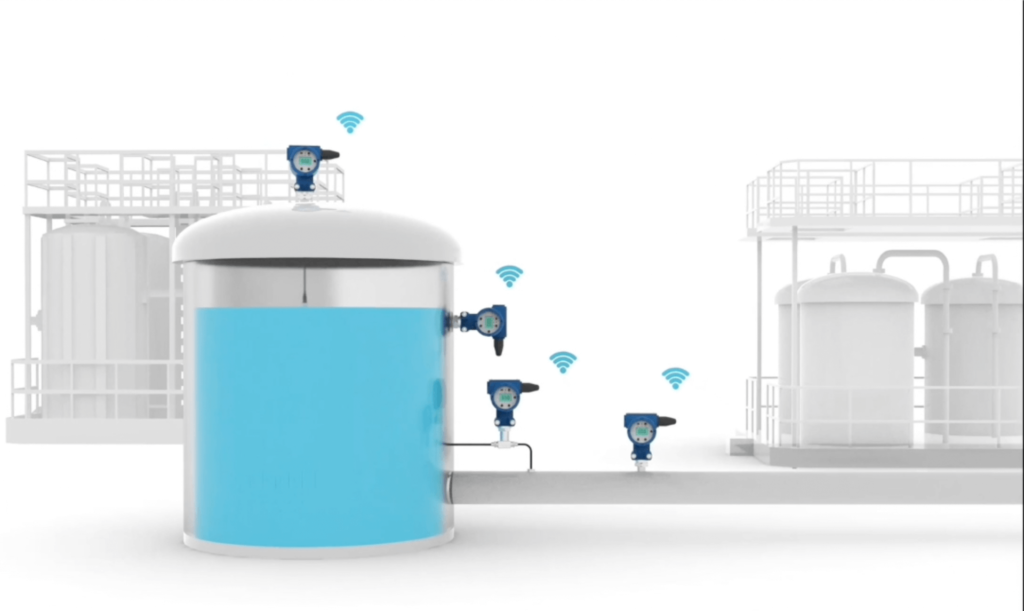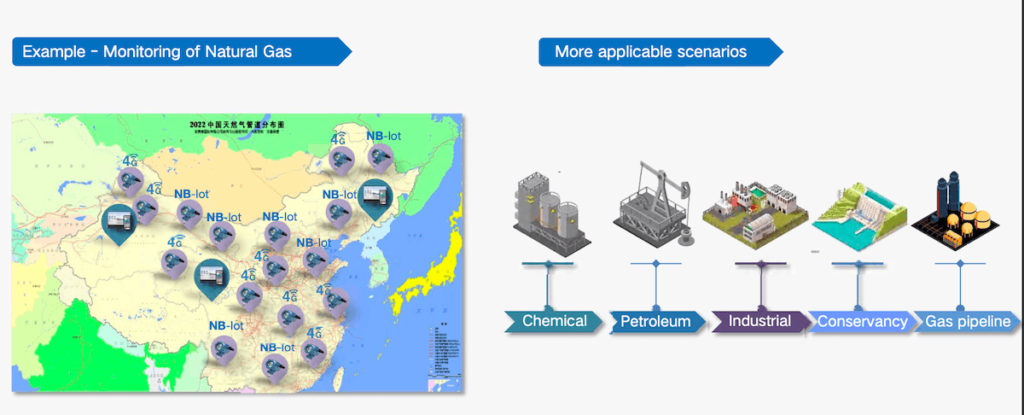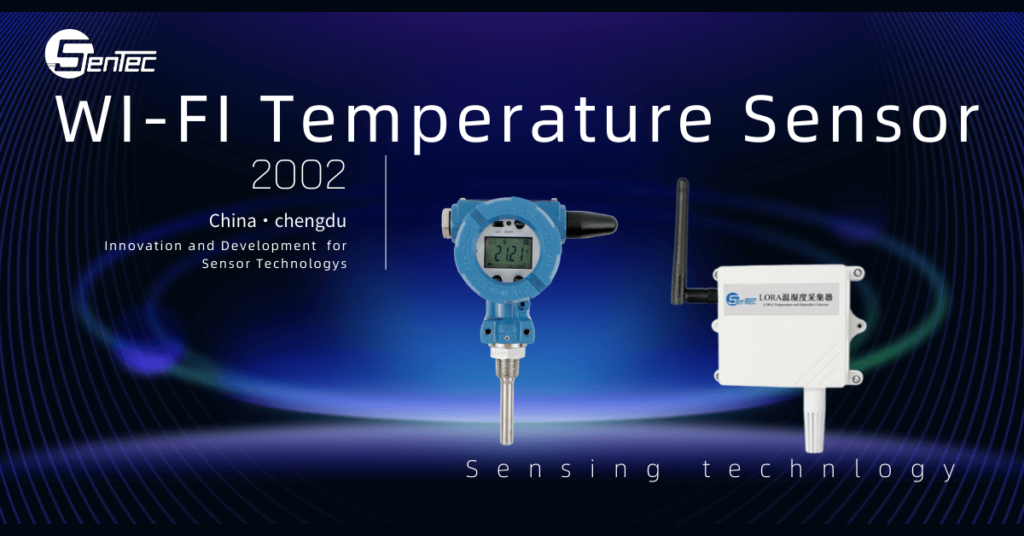Introduction to Wireless Temperature Sensors
In the modern era, wireless temperature sensor has revolutionized the way temperature data is collected and analyzed across various industries. These sensors have proven to be invaluable tools, offering enhanced efficiency, accuracy, and flexibility in temperature monitoring. As the demand for real-time data collection and analysis continues to grow, the adoption of wireless temperature sensors has become increasingly widespread. From industrial applications to environmental monitoring, the use of wireless temperature sensors has significantly improved operational processes and decision-making. This article explores the advantages, applications, working principles, selection criteria, installation best practices, and industrial applications of wireless temperature sensors, shedding light on their pivotal role in enhancing efficiency and accuracy in temperature data collection and analysis.
Advantages of Using Wireless Temperature Sensor
Wireless temperature sensor offers a myriad of advantages over traditional wired sensors, making them a preferred choice for many industries. One of the primary benefits is their flexibility and ease of deployment. Unlike wired sensors, wireless temperature sensors eliminate the need for complex wiring systems, allowing for quick and cost-effective installation. This not only reduces installation time but also minimizes disruptions to existing infrastructure. Additionally, wireless sensors can be easily repositioned or expanded to accommodate changing monitoring needs, providing unparalleled flexibility in data collection. Moreover, the wireless nature of these sensors enables remote monitoring, allowing users to access real-time temperature data from anywhere, at any time. This remote accessibility enhances operational efficiency by enabling proactive decision-making and timely intervention in case of temperature fluctuations or anomalies.

Another significant advantage of wireless temperature sensors is their ability to streamline data collection and analysis processes. By leveraging wireless connectivity, these sensors can seamlessly integrate with data logging systems and cloud-based platforms, facilitating automated data collection and analysis. This not only reduces the risk of human errors associated with manual data recording but also enables real-time data visualization and trend analysis. Furthermore, wireless sensors often feature long battery life and robust communication protocols, ensuring continuous and reliable operation in diverse environmental conditions. Overall, the advantages of using wireless temperature sensors, including flexibility, remote accessibility, and streamlined data processes, significantly contribute to enhancing the efficiency and accuracy of temperature monitoring and analysis.
Applications of Wireless Temperature Sensors
The versatility of wireless temperature sensors makes them suitable for a wide range of applications across various industries. In the pharmaceutical and healthcare sector, these sensors play a critical role in monitoring the temperature of vaccines, medications, and biological samples stored in refrigerators, freezers, and cold rooms. Maintaining the required temperature range is essential to preserve the efficacy and integrity of these sensitive products, and wireless temperature sensors provide continuous monitoring and real-time alerts to prevent temperature excursions. Similarly, in the food and beverage industry, wireless temperature sensors are used to monitor storage facilities, transportation vehicles, and production processes to ensure compliance with food safety regulations and preservation of product quality.

Moreover, in HVAC (heating, ventilation, and air conditioning) systems, wireless temperature sensors are employed to optimize energy efficiency and indoor comfort by providing precise temperature measurements in different zones and environments. This enables proactive adjustments and fine-tuning of HVAC systems, leading to energy savings and improved occupant comfort. Additionally, wireless temperature sensors find applications in research laboratories, cold chain logistics, environmental chambers, and server rooms, where accurate and reliable temperature monitoring is essential for preserving samples, ensuring product quality, and safeguarding equipment. The diverse applications of wireless temperature sensors highlight their significance in various industries and underscore their role in enhancing efficiency and accuracy in temperature monitoring.
How Wireless Temperature Sensors Work
Wireless temperature sensors operate on the principle of capturing temperature readings using a sensor element and transmitting the data wirelessly to a central monitoring system. These sensors are equipped with temperature-sensitive elements, such as thermocouples or thermistors, which detect changes in temperature and convert them into electrical signals. The sensor signals are then processed by an onboard microcontroller, which digitizes the analog readings and prepares them for wireless transmission. The wireless communication technology utilized by these sensors can vary, with options including Wi-Fi, Bluetooth, Zigbee, LoRa, and cellular connectivity, among others.
Once the temperature data is digitized, it is transmitted to a designated receiver or gateway, which acts as a central hub for collecting and aggregating data from multiple sensors. From the gateway, the temperature data can be further integrated into a monitoring system or cloud-based platform for visualization, analysis, and storage. Wireless temperature sensors may also feature advanced functionalities, such as real-time alerts, data logging, and battery management, to enhance their performance and usability. Overall, the seamless operation of wireless temperature sensors, from temperature sensing to wireless transmission and data integration, underscores their ability to enhance efficiency and accuracy in temperature data collection and analysis.
Factors to Consider When Choosing a Wireless Temperature Sensor
When selecting a wireless temperature sensor for a specific application, several key factors should be taken into consideration to ensure optimal performance and compatibility. The environmental conditions in which the sensor will operate play a crucial role in determining the sensor’s suitability. For instance, if the sensor will be deployed in harsh industrial environments or outdoor settings, it should have robust construction and be rated for the appropriate temperature range and environmental protection (e.g., IP65 or IP67). Similarly, the wireless range and communication protocol of the sensor should align with the monitoring infrastructure and operational requirements, ensuring reliable data transmission and connectivity.

Battery life and power management are also significant factors to consider, especially for applications where continuous and long-term monitoring is essential. A wireless temperature sensor with extended battery life or power-saving features can minimize maintenance efforts and ensure uninterrupted operation. Additionally, the sensor’s accuracy, resolution, response time, and calibration requirements should be evaluated based on the specific temperature monitoring needs and regulatory compliance standards. Furthermore, the scalability and interoperability of the sensor with existing monitoring systems or platforms should be assessed to facilitate seamless integration and data management. By carefully considering these factors, organizations can make informed decisions when choosing wireless temperature sensors, ultimately enhancing the efficiency and accuracy of their temperature monitoring processes.
Contact SenTec team for more details of the wireless temperature sensor
Best Practices for Installing Wireless Temperature Sensors
Proper installation of wireless temperature sensors is crucial for ensuring accurate and reliable temperature monitoring. Before installation, a thorough site survey should be conducted to identify the optimal sensor placement locations based on temperature variation, accessibility, and signal strength. The sensors should be positioned to represent the temperature conditions of the monitored area effectively, taking into account factors such as airflow patterns, thermal gradients, and potential sources of heat or cold spots. Additionally, it is essential to ensure that the sensors are securely mounted and adequately protected to prevent physical damage or tampering.
Furthermore, the deployment of wireless temperature sensors should consider the transmission range and signal interference to maintain robust wireless connectivity. In cases where extended wireless range is required, the use of signal repeaters or mesh network configurations can be employed to enhance coverage and reliability. Proper orientation and positioning of antennas, as well as consideration of potential signal-blocking obstacles, can contribute to optimizing wireless communication. Lastly, after installation, performance validation and calibration checks should be conducted to verify the accuracy and consistency of the temperature readings. Following these best practices for installing wireless temperature sensors can maximize their effectiveness and contribute to the overall efficiency and accuracy of temperature monitoring and analysis.
Industrial Applications of Wireless Temperature Sensors
In industrial settings, wireless temperature sensors play a pivotal role in monitoring and controlling temperature-sensitive processes and equipment across diverse sectors, including manufacturing, energy, logistics, and facilities management. For instance, in the manufacturing industry, wireless temperature sensors are utilized to monitor equipment such as motors, bearings, and transformers, enabling predictive maintenance by detecting temperature anomalies that may indicate potential faults or malfunctions. By proactively addressing these issues, organizations can minimize downtime, extend equipment lifespan, and optimize operational efficiency.
Moreover, in the energy sector, wireless temperature sensors are instrumental in monitoring the temperature of critical components in power generation facilities, substations, and renewable energy installations. By continuously monitoring temperature variations, these sensors contribute to the safe and reliable operation of equipment, as well as the early detection of overheating or cooling inefficiencies. In logistics and supply chain management, wireless temperature sensors are employed to monitor the temperature of perishable goods during storage and transportation, ensuring compliance with quality standards and regulatory requirements. Additionally, in facilities management, wireless temperature sensors are integrated into building automation systems to monitor HVAC performance, optimize energy usage, and maintain occupant comfort.
The industrial applications of wireless temperature sensors underscore their significant impact on operational efficiency, asset protection, and safety across various industrial sectors. By providing real-time temperature monitoring and actionable insights, these sensors contribute to enhanced productivity, reduced operational risks, and cost savings, thereby demonstrating their pivotal role in improving efficiency and accuracy in industrial temperature measurement and control.
Wireless Temperature and Humidity Sensors for Environmental Monitoring
In addition to temperature monitoring, wireless sensors that combine temperature and humidity measurement capabilities are widely used for environmental monitoring in indoor and outdoor settings. These sensors are essential for assessing environmental conditions in spaces such as warehouses, museums, data centers, and agricultural facilities, where temperature and humidity levels can impact the preservation of artifacts, equipment, and products. By monitoring both temperature and humidity, these sensors provide comprehensive insights into environmental conditions, enabling proactive measures to maintain optimal storage and operational environments.
For instance, in data centers, wireless temperature and humidity sensors are deployed to monitor the environmental conditions that can affect the performance and longevity of sensitive IT infrastructure and equipment. By ensuring precise control of temperature and humidity levels, these sensors contribute to the prevention of equipment failures, data loss, and operational disruptions. Similarly, in agricultural settings, wireless sensors play a crucial role in monitoring the temperature and humidity of storage facilities, greenhouses, and crop storage areas to preserve product quality and prevent spoilage. The integration of temperature and humidity monitoring capabilities in wireless sensors enhances the effectiveness of environmental monitoring systems, providing comprehensive data for informed decision-making and proactive environmental control measures.
Overall, the use of wireless temperature and humidity sensors for environmental monitoring reflects their importance in maintaining optimal conditions for various applications, from preserving valuable assets to ensuring the quality and safety of products. By facilitating real-time monitoring and control of temperature and humidity parameters, these sensors contribute to enhancing the efficiency and accuracy of environmental management practices.
Comparison of Different Types of Wireless Temperature Sensors
When considering the adoption of wireless temperature sensors, it is essential to evaluate the different types available in the market to identify the most suitable solution for specific requirements. Various types of wireless temperature sensors are available, each offering distinct features, performance characteristics, and deployment options. Some common types include Wi-Fi temperature sensors, Bluetooth temperature sensors, Zigbee temperature sensors, LoRa temperature sensors, and cellular-connected temperature sensors. Each type of sensor has unique advantages and limitations, making it crucial to conduct a comparative analysis to determine the best fit for the intended application.
Wi-Fi temperature sensors are known for their widespread compatibility and seamless integration with existing Wi-Fi networks, making them suitable for applications where reliable internet connectivity is available. Bluetooth temperature sensors, on the other hand, are ideal for short-range wireless communication and are often used in scenarios where the monitoring system is in close proximity to the sensors. Zigbee temperature sensors are characterized by low power consumption and mesh networking capabilities, making them suitable for large-scale deployments and environments with potential signal interference. LoRa temperature sensors excel in long-range communication and low-power operation, making them suitable for outdoor or remote monitoring applications. Cellular-connected temperature sensors leverage cellular networks for wide-area coverage and are suitable for applications where traditional internet connectivity is limited or unavailable.
By comparing the different types of wireless temperature sensors based on factors such as range, power consumption, communication protocols, and compatibility, organizations can make informed decisions to select the most suitable option for their specific requirements. This comparative analysis enables the optimization of wireless temperature sensor deployment, contributing to enhanced efficiency and accuracy in temperature monitoring and management.
Conclusion
In conclusion, the adoption of wireless temperature sensors has significantly enhanced the efficiency and accuracy of temperature data collection and analysis across diverse industries. The advantages of wireless temperature sensors, including flexibility, remote accessibility, and streamlined data processes, have transformed the landscape of temperature monitoring, enabling proactive decision-making and improved operational outcomes. The diverse applications of wireless temperature sensors in sectors such as healthcare, food and beverage, HVAC, research, and logistics underscore their pivotal role in ensuring compliance, quality, and safety in temperature-sensitive environments.
Understanding the working principles and factors to consider when choosing wireless temperature sensors is essential for maximizing their effectiveness and compatibility with specific monitoring needs. By following best practices for installation and leveraging the capabilities of wireless temperature sensors, organizations can optimize their temperature monitoring processes and achieve reliable, real-time insights for informed decision-making. The industrial applications of wireless temperature sensors highlight their significant impact on operational efficiency, asset protection, and safety across various sectors, demonstrating their pivotal role in temperature measurement and control.
Furthermore, the integration of wireless temperature and humidity sensors for environmental monitoring expands the scope of sensor capabilities, providing comprehensive insights into environmental conditions for proactive management and preservation of assets and products. Finally, conducting a comparative analysis of different types of wireless temperature sensors enables organizations to select the most suitable solution for their specific requirements, optimizing the deployment and performance of wireless temperature monitoring systems.
In essence, wireless temperature sensors have emerged as indispensable tools for enhancing efficiency and accuracy in temperature data collection and analysis, empowering organizations to optimize their operations, ensure compliance, and mitigate risks associated with temperature variations. As industries continue to embrace digital transformation and the demand for real-time data-driven insights grows, the role of wireless temperature sensors in enabling smart, connected monitoring solutions becomes increasingly paramount.
CTA: For more information on wireless temperature sensors and advanced monitoring solutions, please contact our team of experts to discuss your specific requirements and explore the latest innovations in temperature monitoring technology.




